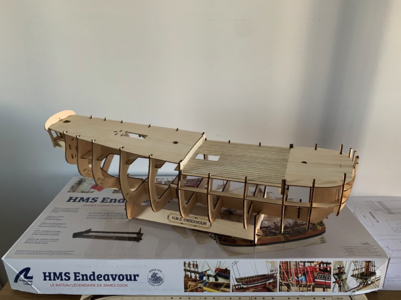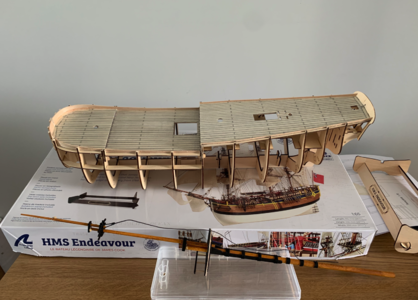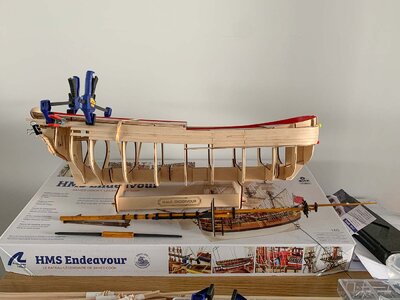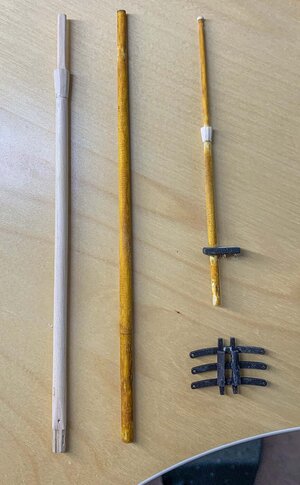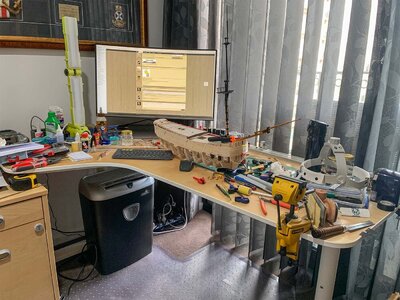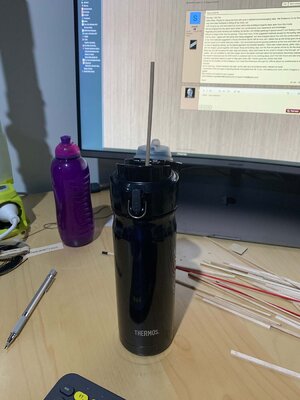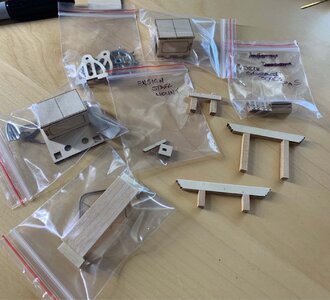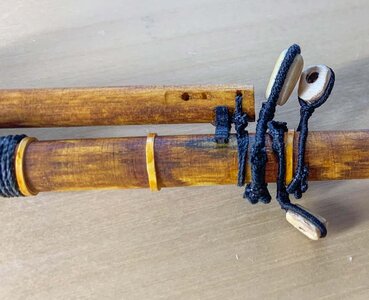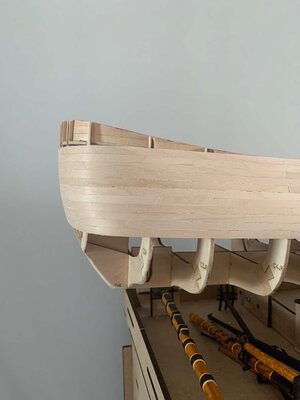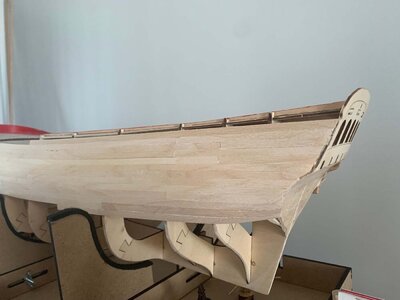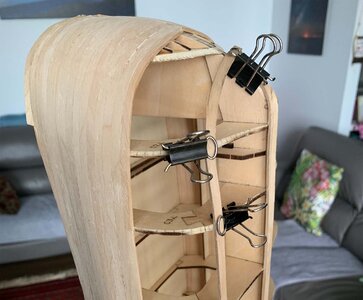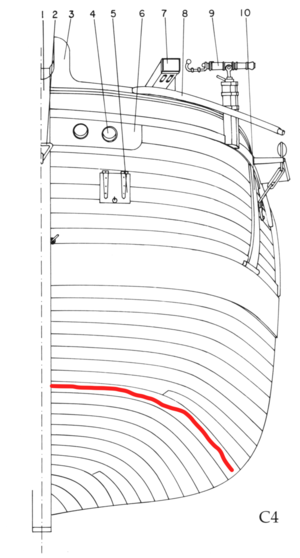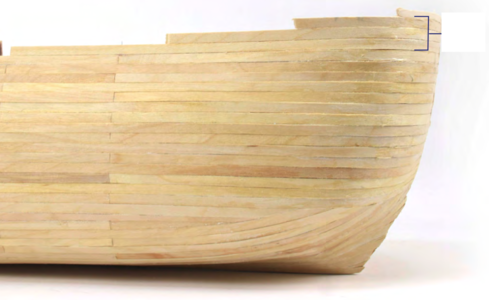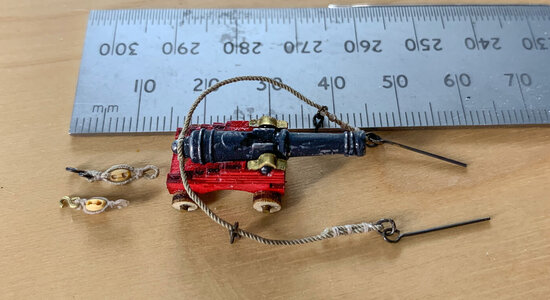- Joined
- Dec 30, 2021
- Messages
- 278
- Points
- 278

What's in the Box: 24 Dec 2021
My second build is underway. I am constructing the new HMB ENDEAVOUR in 1/65 scale by Artesania Latina. The kit has some amazing features for the price including detailed templates when it comes time to find the openings in the hull, etched stainless steel details for almost everything and highly detailed pewter castings for cannons, anchors, figureheads etc.
Everything is tightly shrink-wrapped in the multiple layers in the box and all the small parts come in handy compartmentalised containers.
The laser cut wood is mostly cleanly cut but there are a couple of burns where the laser did not cut all the way through.
The kit does not come with hardcopy instructions but a CD with a 516 page PDF of colour assembly diagrams and a separate PDF parts list. Only problem is, the supplied wood does not match the dimensions shown and sorting the various timbers is difficult as no quantities are provided so in some cases its a guessing game (e.g. 1.15mm is 1mm thick material while 1.28mm thick is 1.5mm material).
To keep the price of the kit down, all 280 x 4mm and 8 x 3mm single blocks are laser cut timber and must be cut out, drilled and shaped individually. Same goes for the all the cleats.
The thread is all Artesania's own and you get plenty of it.
There are nicely printed flags which appear to come on a fabric material and all the sails are lightweight, pleated and overlocked. Not sure I like the overlocking as I hemmed my own sails in my first build and that looked far neater and prototypical.
My second build is underway. I am constructing the new HMB ENDEAVOUR in 1/65 scale by Artesania Latina. The kit has some amazing features for the price including detailed templates when it comes time to find the openings in the hull, etched stainless steel details for almost everything and highly detailed pewter castings for cannons, anchors, figureheads etc.
Everything is tightly shrink-wrapped in the multiple layers in the box and all the small parts come in handy compartmentalised containers.
The laser cut wood is mostly cleanly cut but there are a couple of burns where the laser did not cut all the way through.
The kit does not come with hardcopy instructions but a CD with a 516 page PDF of colour assembly diagrams and a separate PDF parts list. Only problem is, the supplied wood does not match the dimensions shown and sorting the various timbers is difficult as no quantities are provided so in some cases its a guessing game (e.g. 1.15mm is 1mm thick material while 1.28mm thick is 1.5mm material).
To keep the price of the kit down, all 280 x 4mm and 8 x 3mm single blocks are laser cut timber and must be cut out, drilled and shaped individually. Same goes for the all the cleats.
The thread is all Artesania's own and you get plenty of it.
There are nicely printed flags which appear to come on a fabric material and all the sails are lightweight, pleated and overlocked. Not sure I like the overlocking as I hemmed my own sails in my first build and that looked far neater and prototypical.
Last edited:



